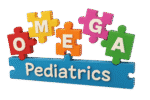Autism Spectrum Disorder (ASD) is a developmental condition that impacts how a child communicates, interacts socially, and learns. For many parents, receiving an autism diagnosis for their child can feel overwhelming, but there is hope.
One of the most effective strategies for supporting a child with autism is early intervention, which involves targeted therapies and services during the critical early years of life. Early intervention has been shown to significantly improve outcomes, helping children develop essential skills and achieve their fullest potential.
This article will explain what early intervention is, why it is crucial for children with autism, and how parents can take the first steps to access these transformative services.
What is Early Intervention for Autism?
Early intervention refers to the structured therapies and educational programs provided to young children, typically from birth to age five, who show developmental delays or receive a diagnosis of autism. These services are tailored to the child’s specific needs to support their social, emotional, cognitive, and physical development during the formative years.
Types of Early Intervention Services
A variety of therapies fall under the umbrella of early intervention. These include:
- Speech and Language Therapy: Focuses on improving a child’s ability to communicate, whether through verbal language, gestures, or assistive communication devices.
- Occupational Therapy: Helps children develop fine motor skills, sensory processing abilities, and the skills needed for daily activities such as dressing and eating.
- Behavioral Therapy: Techniques like Applied Behavior Analysis (ABA) aim to improve behaviors, teach new skills, and help children navigate challenging situations.
- Developmental Play Therapy: Uses play as a means to foster creativity, social interaction, and problem-solving abilities.
- Physical Therapy: Supports gross motor skills, like balance, coordination, and walking, for children who may have related delays.
Why Early Intervention Is Critical for Children with Autism
 The early years of a child’s life are marked by rapid brain development. During this period, the brain is highly malleable, meaning it is more capable of learning and adapting. For children with autism, this “plasticity” provides a unique opportunity to address developmental challenges and build critical skills before they become ingrained patterns.
The early years of a child’s life are marked by rapid brain development. During this period, the brain is highly malleable, meaning it is more capable of learning and adapting. For children with autism, this “plasticity” provides a unique opportunity to address developmental challenges and build critical skills before they become ingrained patterns.
The Science Behind Early Intervention
Research has consistently shown that early intervention can make a significant difference for children with autism. According to a 2020 study published in JAMA Pediatrics, children who begin therapies before the age of three demonstrate marked improvements in communication, social interaction, and adaptive behaviors.
The earlier these services are introduced, the greater the long-term benefits.
The Key Benefits of Early Intervention for Autism
Early intervention can reshape a child’s developmental trajectory. Below, we break down the most significant benefits that early intervention offers to children with autism and their families.
1. Enhances Communication Skills
Communication challenges are among the most common difficulties for children with autism. While some children may struggle to develop speech, others might have trouble understanding social cues or expressing their needs. Early intervention programs, particularly speech therapy, address these challenges in a structured, individualized manner.
How It Helps:
- Children learn basic communication skills, such as making eye contact or pointing to objects.
- Therapy fosters the development of verbal language, from single words to complex sentences.
- Nonverbal children benefit from alternative communication tools like picture cards or speech-generating devices.
By building communication skills early, children become better equipped to express themselves, reducing frustration and opening pathways to deeper connections with others.
2. Strengthens Social Skills
Social interaction is another area where many children with autism need extra support. Challenges in this area can lead to difficulties forming relationships or engaging in group activities. Through early intervention, children receive guided opportunities to practice and develop these skills in safe, supportive settings.
How It Helps:
- Therapies teach foundational skills like turn-taking, sharing, and initiating interactions.
- Children learn to interpret facial expressions, gestures, and tone of voice.
- Group activities within early intervention programs provide practice in social environments.
These improvements not only enhance peer relationships but also help children navigate family dynamics and school settings more confidently.
3. Builds Emotional Regulation and Behavioral Coping Strategies
Children with autism often experience sensory sensitivities or difficulty regulating their emotions. This can result in tantrums, anxiety, or other behaviors that disrupt daily life. Early intervention focuses on equipping children with the tools they need to manage these challenges effectively.
How It Helps:
- Therapists identify triggers for challenging behaviors and develop strategies to manage them.
- Positive reinforcement techniques encourage desirable behaviors while reducing problematic ones.
- Parents are given tools to create consistent, structured environments at home.
Over time, children learn healthier ways to cope with overwhelming situations, leading to a calmer and more balanced daily life.
4. Improves Fine and Gross Motor Skills
Some children with autism may experience delays in physical development, such as difficulties with coordination, balance, or fine motor control. Occupational and physical therapy within early intervention programs address these specific challenges.
How It Helps:
- Activities like drawing, cutting, or stacking objects strengthen fine motor skills.
- Gross motor activities, such as jumping, climbing, or throwing, improve coordination and strength.
- Sensory integration techniques help children process and respond to sensory stimuli more effectively.
These skills not only improve physical abilities but also foster independence in activities like dressing, eating, and playing.
5. Prepares Children for School and Beyond
One of the long-term goals of early intervention is to prepare children with autism for school and daily life. By addressing developmental challenges early, children enter school with a stronger foundation for success.
How It Helps:
- Improved attention and focus make it easier to engage in classroom activities.
- Social and communication skills foster positive interactions with teachers and peers.
- Greater independence in daily routines reduces the need for extra support in the classroom.
The earlier these skills are developed, the more seamless the transition to formal education becomes, setting the stage for lifelong learning.
Steps to Access Early Intervention for Your Child
For parents ready to explore early intervention, the process may seem daunting at first. However, with the right guidance, you can ensure your child receives the support they need.
1. Recognize the Early Signs of Autism
Early signs of autism often appear in infancy or toddlerhood. Some common signs include:
- Delayed speech or language development.
- Difficulty making eye contact or engaging with others.
- Limited interest in playing with peers.
- Repetitive movements, like hand-flapping or rocking.
If you notice these signs, consult your pediatrician for an evaluation.
2. Seek a Formal Diagnosis
To access most early intervention services, a formal diagnosis of autism is required. A developmental pediatrician, child psychologist, or neurologist can provide this evaluation. Many states offer free developmental screenings through early intervention programs or school systems.
3. Connect with Local Early Intervention Programs
In the United States, early intervention services are provided under the Individuals with Disabilities Education Act (IDEA). For children under three, these services are coordinated through state-run programs. For children aged three to five, special education preschool programs may be available.
Speak to your pediatrician or contact your state’s early intervention program for more information.
4. Consider Additional Private Therapies
In addition to public programs, many families seek out private speech, occupational, or behavioral therapy. Insurance plans often cover these services with a formal autism diagnosis.
For more insights on healthcare access, visit Omegapediatrics.com in these articles:
- 8 Resources for Child-Rearing: Accessing Better Support Systems for Parents in the US
- Percentage of Children in the US who have Health Insurance and Its Impact on Their Well-Being
Supporting Early Intervention at Home: Parent Tips
Parents play an essential role in their child’s progress. By reinforcing therapeutic strategies at home, you can help your child make even greater strides.
Simple Ways to Support Your Child:
- Establish Routines: A predictable daily schedule helps children feel secure and reduces anxiety.
- Practice Skills Through Play: Use games and toys to practice turn-taking, following instructions, and problem-solving.
- Read Together: Reading books can enhance language development and build focus.
- Celebrate Small Victories: Acknowledging even minor achievements builds your child’s confidence and motivation.
- Stay Informed: Educate yourself about autism and early intervention to make informed decisions for your child.
For more parenting tips, check out these articles: 4 Types of Play for Healthy, Happy Kids and Unlocking the Benefits of Imaginative Play for Children’s Creativity & Social Skills
The Long-Term Impact of Early Intervention
 The benefits of early intervention extend far beyond childhood. Research shows that children who receive timely, targeted therapies are more likely to:
The benefits of early intervention extend far beyond childhood. Research shows that children who receive timely, targeted therapies are more likely to:
- Develop meaningful relationships with peers and family members.
- Succeed academically and professionally.
- Lead more independent, fulfilling lives as adults.
Each child with autism has a unique journey, but early intervention provides the tools and support they need to thrive. It not only helps children but also empowers families, giving parents the confidence to guide their child’s development.
Have Your Child’s Autism Treated Early
Early intervention is a powerful resource for children with autism. By addressing developmental challenges during the critical early years, these services pave the way for improved communication, stronger social skills, and greater independence.
Whether you’re just starting your journey or already exploring therapies, know that early intervention can make a profound difference in your child’s life. If you have concerns about your child’s development or want to learn more about available resources, visit Omega Pediatrics for expert guidance and support.
Early intervention is not just about addressing challenges—it’s about unlocking your child’s potential for a bright, fulfilling future.


